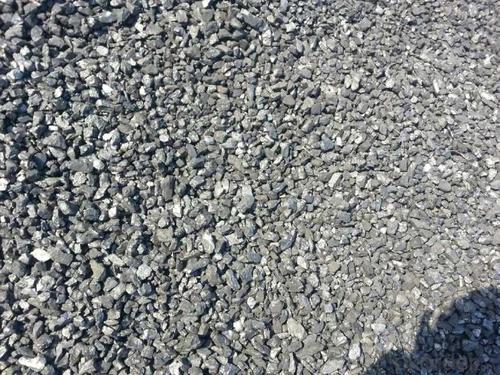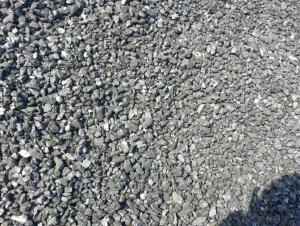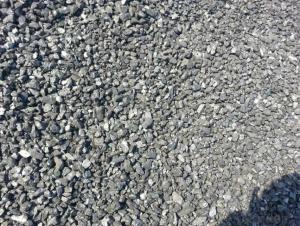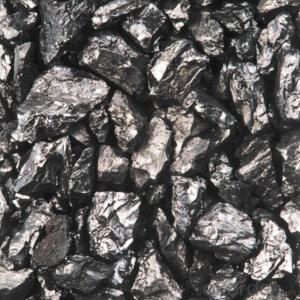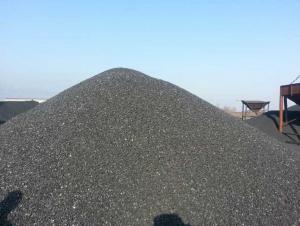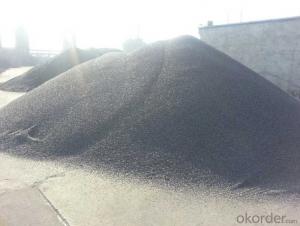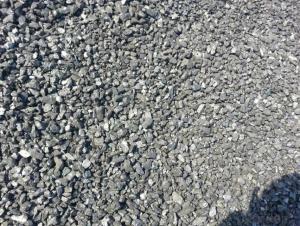FC90-95 Recarburizer -Low Sulphur and low P
- Loading Port:
- Tianjin
- Payment Terms:
- TT OR LC
- Min Order Qty:
- 20 m.t.
- Supply Capability:
- 3000 m.t./month
OKorder Service Pledge
OKorder Financial Service
You Might Also Like
Packaging & Delivery
25kgs/50kgs/1ton per bag or as buyer's request
Specifications
Calcined Anthracite
Fixed carbon: 90%-95%
S: 0.5% max
Size: 0-3. 3-5.3-15 or as request
It used the high quality anthracite as raw materials through high temperature calcined at over 2000 by the DC electric calciner with results in eliminating the moisture and volatile matter from anthracite efficiently, improving the density and the electric conductivity and strengthening the mechanical strength and anti-oxidation. It has good characteristics with low ash, low resistvity, low sulphur, high carbon and high density. It is the best material for high quality carbon products.
Advantage and competitive of caclined anthracite:
1. strong supply capability
2. fast transportation
3. lower and reasonable price for your reference
4.low sulphur, low ash
5.fixed carbon:95% -90%
6..sulphur:lower than 0.3%
General Specification of Calcined Anthracite:
| FC % | 95 | 94 | 93 | 92 | 90 |
| ASH % | 4 | 5 | 6 | 6.5 | 8.5 |
| V.M. % | 1 | 1 | 1 | 1.5 | 1.5 |
| S % | 0.3 | 0.3 | 0.3 | 0.35 | 0.35 |
| MOISTURE % | 0.5 | 0.5 | 0.5 | 0.5 | 0.5 |
Pictures

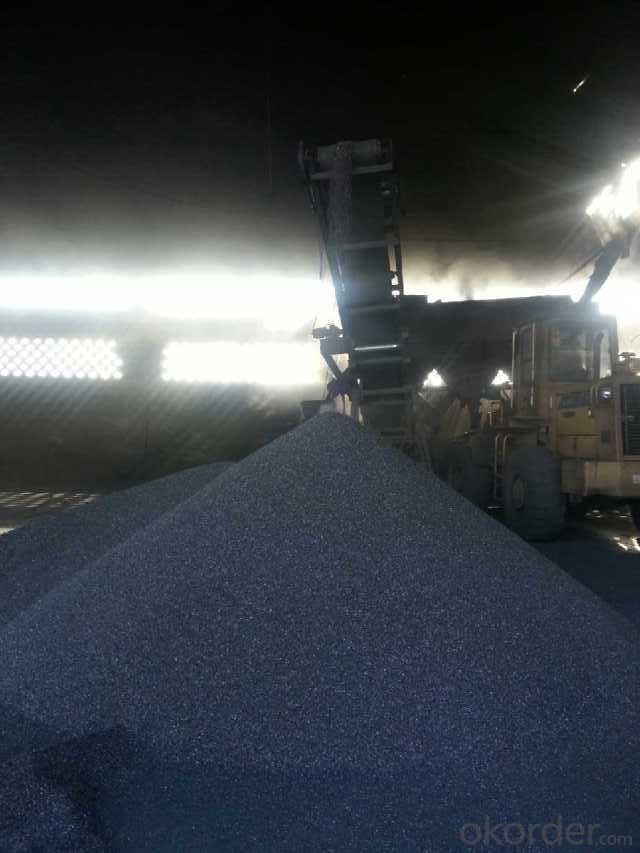
- Q: What is the greenhouse effect of carbon dioxide?
- The greenhouse effect of carbon dioxide refers to the process by which carbon dioxide (CO2) and other greenhouse gases in the Earth's atmosphere trap heat from the sun and contribute to the warming of the planet. These gases act like a blanket, allowing sunlight to pass through but trapping the heat that is reflected back from the Earth's surface. When sunlight reaches the Earth's surface, it warms the land, oceans, and atmosphere. As the Earth re-radiates this heat back into space, greenhouse gases absorb and re-emit some of this energy, preventing it from escaping into space. This process naturally occurs and is essential for maintaining the Earth's temperature within a habitable range, making life as we know it possible. However, human activities, particularly the burning of fossil fuels such as coal, oil, and natural gas, have significantly increased the concentration of carbon dioxide and other greenhouse gases in the atmosphere. This has intensified the greenhouse effect, leading to a rise in global temperatures, commonly referred to as global warming or climate change. The increased levels of carbon dioxide in the atmosphere result in more heat being trapped, creating a greenhouse effect that amplifies the natural warming process. The consequences of this include rising sea levels, more frequent and severe extreme weather events, changes in precipitation patterns, and disruptions to ecosystems and biodiversity. Addressing the greenhouse effect of carbon dioxide and reducing greenhouse gas emissions is crucial in mitigating the impacts of climate change. Efforts to transition to renewable energy sources, increase energy efficiency, and promote sustainable practices are key in reducing carbon dioxide emissions and combating global warming.
- Q: How many points can Yongan change for 1 carbon coins?
- Every Thursday at 19:00, carbon points change for carbon coins, 19:30 carbon coins exchange gifts
- Q: How do forests act as carbon sinks?
- Forests act as carbon sinks by absorbing carbon dioxide from the atmosphere through the process of photosynthesis. Trees and other plants take in carbon dioxide and convert it into oxygen, while storing the carbon in their trunks, branches, and roots. This stored carbon remains in the forest ecosystem, reducing the amount of greenhouse gases in the atmosphere and helping to mitigate climate change.
- Q: What are the environmental impacts of carbon emissions?
- The environmental impacts of carbon emissions include climate change, air pollution, ocean acidification, and ecosystem disruptions. Carbon emissions contribute to the greenhouse effect, leading to global warming and climate change. This results in more frequent and intense extreme weather events such as hurricanes, droughts, and heatwaves. Additionally, carbon emissions contribute to air pollution, especially in urban areas, leading to respiratory problems and other health issues. Increased carbon dioxide in the atmosphere also leads to ocean acidification, threatening marine life and coral reefs. Finally, carbon emissions disrupt ecosystems by altering the natural balance of carbon cycles and causing habitat loss for many species.
- Q: What are the consequences of increased carbon emissions on vulnerable communities?
- Increased carbon emissions have severe consequences on vulnerable communities. Firstly, these communities often lack the resources and infrastructure to adapt to and mitigate the effects of climate change. As carbon emissions contribute to global warming, vulnerable communities are more likely to experience extreme weather events such as hurricanes, floods, and heatwaves. These events can result in displacement, loss of homes, and even loss of lives, disproportionately impacting those who are already marginalized. Furthermore, increased carbon emissions contribute to air pollution, which poses significant health risks to vulnerable communities. People living in low-income areas often reside near industrial plants or highways with high levels of emissions, leading to an increased risk of respiratory diseases, cardiovascular problems, and other health issues. Children, the elderly, and individuals with pre-existing health conditions are particularly vulnerable. The consequences of increased carbon emissions also extend to food security. Climate change affects agriculture and alters growing seasons, leading to reduced crop yields and food shortages. Vulnerable communities heavily reliant on subsistence farming or areas prone to droughts or floods face the risk of malnutrition and hunger. This exacerbates existing inequalities and can lead to social unrest and economic instability. In addition, vulnerable communities often rely on natural resources for their livelihoods, such as fishing, forestry, or tourism. The negative impacts of carbon emissions, like ocean acidification and coral bleaching, threaten these industries, resulting in job losses and economic decline. This further perpetuates the cycle of poverty and socio-economic vulnerability. Ultimately, increased carbon emissions disproportionately harm vulnerable communities by amplifying existing inequalities and exacerbating the challenges they face. It is crucial to address these consequences through climate mitigation efforts, adaptation strategies, and support for sustainable development.
- Q: What is carbon offsetting in the automotive industry?
- The automotive industry practices carbon offsetting as a way to counterbalance the greenhouse gas emissions produced by vehicles. Carbon offsetting aims to either neutralize or decrease the overall environmental impact, considering that automobiles contribute significantly to carbon dioxide emissions. Within the automotive industry, there are various approaches to achieve carbon offsetting. One commonly used method involves purchasing carbon credits or offsets. These credits represent a reduction or elimination of carbon dioxide emissions in other areas, such as renewable energy projects or reforestation initiatives. By acquiring these credits, automotive companies or individuals can offset the emissions generated by their vehicles, thus achieving a balance in their carbon footprint. Another way to implement carbon offsetting in the automotive sector is by investing in clean technologies and practices. This can involve the development and implementation of more fuel-efficient engines, hybrid or electric vehicles, or the utilization of alternative fuels. By reducing the amount of carbon dioxide emitted per kilometer driven, automotive companies can offset their overall emissions and contribute to a more environmentally friendly transportation industry. Furthermore, companies within the automotive industry can engage in carbon offsetting by promoting sustainable practices throughout their supply chain. This includes collaborating with suppliers to decrease emissions during the production of vehicle components or adopting energy-efficient manufacturing processes. By addressing emissions throughout the entire lifecycle of a vehicle, from production to disposal, carbon offsetting becomes a comprehensive approach to mitigating the environmental impact of the automotive industry. In conclusion, carbon offsetting in the automotive industry encompasses various strategies and actions taken to compensate for the greenhouse gas emissions produced by vehicles. Whether through the purchase of carbon credits, investment in clean technologies, or the promotion of sustainable practices, carbon offsetting seeks to reduce the overall impact of automobiles on the environment and contribute to a sustainable future.
- Q: What materials can be carbonitriding?
- Low temperature carbonitriding for high alloy tool steel, high-speed steel tools, etc., in temperature carbonitriding is under great pressure not only in carbon steel wear parts, high temperature carbonitriding is mainly used for medium carbon steel and alloy steel under great pressure.
- Q: How can carbon capture and storage help reduce greenhouse gas emissions?
- Carbon capture and storage (CCS) is a technology that can play a significant role in reducing greenhouse gas emissions. It involves capturing carbon dioxide (CO2) produced from industrial processes or power generation, transporting it, and then storing it underground in geological formations. Firstly, CCS can help reduce greenhouse gas emissions by capturing CO2 directly from large point sources, such as power plants or industrial facilities, that would otherwise be released into the atmosphere. By capturing and storing this CO2, it prevents it from contributing to the greenhouse effect and mitigates its impact on climate change. Secondly, CCS can enable the continued use of fossil fuels, such as coal or natural gas, in a more environmentally friendly manner. These fuels are currently the primary sources of energy for electricity generation and industrial processes. By implementing CCS, the CO2 emissions from these fossil fuel-based activities can be drastically reduced, allowing for a transition towards cleaner energy sources in a more gradual and economically feasible manner. Furthermore, CCS can also be coupled with bioenergy production, creating what is known as bioenergy with carbon capture and storage (BECCS). This process involves using biomass, such as crop residues or purpose-grown energy crops, to produce energy. The CO2 emitted during the bioenergy production is then captured and stored, resulting in a negative emissions process. BECCS can effectively remove CO2 from the atmosphere, helping to offset emissions from other sectors and achieving net-negative emissions. Lastly, CCS can contribute to the decarbonization of hard-to-abate sectors, such as cement and steel production, where alternative low-carbon technologies are currently limited. By capturing and storing CO2 emissions from these sectors, CCS can significantly reduce their overall greenhouse gas emissions and facilitate their transition towards more sustainable practices. In conclusion, carbon capture and storage technology can help reduce greenhouse gas emissions by directly capturing and storing CO2 from large point sources, allowing for the continued use of fossil fuels in a more sustainable manner, enabling the deployment of negative emissions technologies like BECCS, and supporting the decarbonization of hard-to-abate sectors. Implementing CCS alongside other mitigation strategies can play a vital role in achieving global climate goals and combating climate change.
- Q: The main difference between steel and iron is the difference in carbon content
- The essential difference between steel and iron is that there is a difference in carbon content.1, steel, is a carbon content, mass percentage of 0.02% to 2.04% between the ferroalloy. The chemical composition of steel can have great changes, only the carbon steel is called carbon steel (carbon steel) or ordinary steel; in actual production, steel tend to use different with different alloy elements, such as manganese, nickel, vanadium and so on;2 iron is a chemical element. Its chemical symbol is Fe. It has an atomic number of 26. It is the most common metal. It is a kind of transition metal. A metal element with a second highest crustal content.Extension of knowledge point:Iron into pig iron and wrought iron. Wrought iron, steel and cast iron is an alloy of iron and carbon with the carbon content difference. Generally less than 0.2% carbon content that wrought iron or iron, the content of 0.2-1.7% in the steel, is iron content of more than 1.7%. Soft wrought iron, good plasticity, easy deformation, strength and hardness were lower, not widely used; iron carbon, hard and brittle, almost no plastic; steel pig iron and wrought iron with two kinds of advantages, widely used for human.
- Q: What is the boiling point of carbon?
- The boiling point of carbon, an element that is not metallic, is determined by its allotrope. Carbon exhibits various allotropes, such as graphite and diamond, each possessing distinct physical characteristics. Graphite, comprising layers of carbon atoms organized in a hexagonal lattice, lacks a boiling point because it directly transitions from a solid to a gas through sublimation. Conversely, diamond, composed of carbon atoms arranged in a three-dimensional lattice, also lacks a boiling point as it undergoes direct sublimation. Consequently, carbon, in its pure elemental form, does not possess a boiling point.
Send your message to us
FC90-95 Recarburizer -Low Sulphur and low P
- Loading Port:
- Tianjin
- Payment Terms:
- TT OR LC
- Min Order Qty:
- 20 m.t.
- Supply Capability:
- 3000 m.t./month
OKorder Service Pledge
OKorder Financial Service
Similar products
Hot products
Hot Searches
Related keywords


